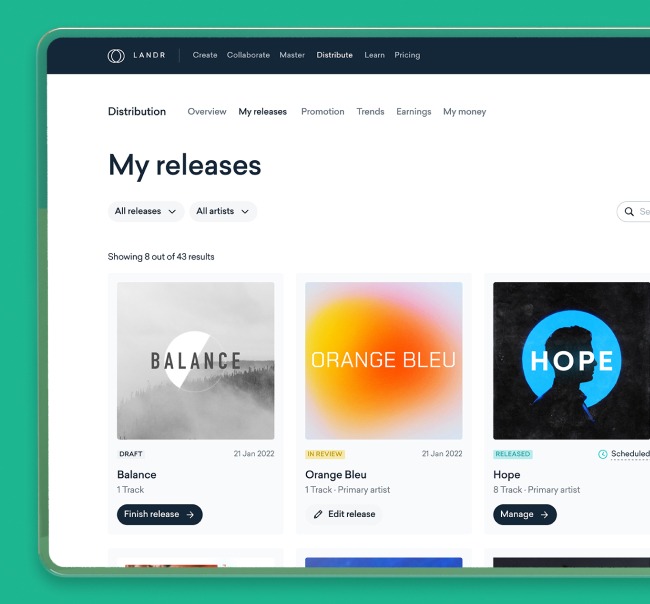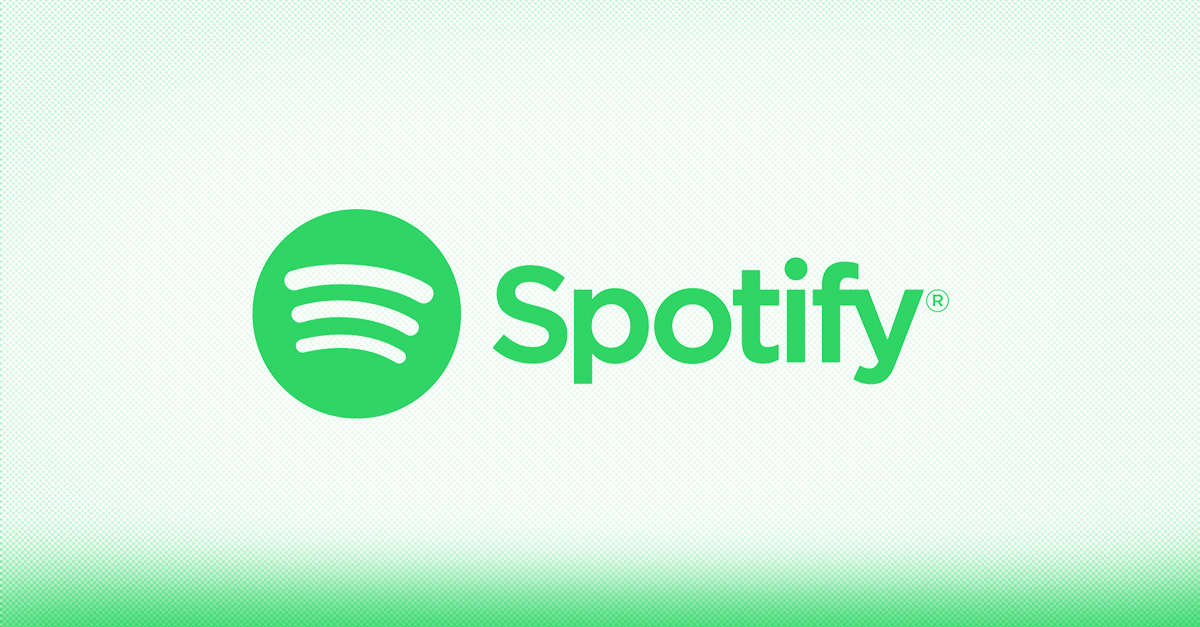Spotify Royalties: How Much Does Spotify Pay Per Stream in 2024?

Spotify is by far the world’s biggest streaming platform. Every day thousands of songs are distributed to the service where artists can connect with hundreds of millions of paying subscribers.
What makes streaming platforms special is that these platforms have created a way for fans to gain access to unlimited content while making it possible for artists to be paid for streams of their music.
Of course, streaming revenue across all the streaming platforms has been the subject of much debate. Many artists have been critical of how little streaming platforms like Spotify seem to pay per stream.
And because Spotify is the largest streaming service provider, Spotify royalties often sit at the centre of the debate.
Everyone wants artists to be paid fairly for their work.
But there are some important realities to confront when distributing your music to streaming platforms—yes, artists can make money, but it’s super important to be realistic and have a music marketing plan to go along with your release.
In this article, we’ll take a look at how exactly Spotify and streaming platforms calculate royalties and why you should never use a fake stream service.
Plus, I’ll share some creative ideas for increasing your reach and improving your music promotion strategy.
Let’s dive in!
Everyone wants artists to be paid fairly for their work.
How much does Spotify pay per stream?
Contrary to popular belief, Spotify does not pay a set royalty per stream. Instead, Spotify royalties are based on pools of money available to sets of artists on the platform.
For example, artists belonging to a pool that gets fewer plays or contains fewer artists will get higher payments—meaning payments per stream can fluctuate.
Spotify royalties are based on pools of money available to sets of artists on the platform.
Spotify hasn’t said much about how exactly artists are pooled into various groups, but it’s safe to guess that some of these decisions are based on genre, engagement and release frequency.
After all, Spotify is incentivized to reward and keep high-quality artists that release often on their platform.
It’s also why there’s no clear answer about how much a single stream will earn.
Unpacking the upcoming Spotify royalty update for 2024
In October 2023, new reports from Music Business Weekly surfaced about Spotify’s coming updates to its royalty system.
The main theme of Spotify’s update centers around limiting streaming fraud and eliminating micropayments to artists with very small listenership.
These updates are expected to roll out in 2024.
Here’s what you need to know about the three main changes coming to Spotify’s royalty model.
Minimum listenership to receive payouts
In a similar move to how YouTube opens up monetization to its creators, Spotify will now require each track to achieve a specific level of revenue within a year to receive a streaming payout.
The amount of revenue needed to surpass the threshold is said to be 5 cents per track, as reported by Music Business Weekly—which amounts to approximately 1,000 streams per year.
This means artists who are starting out will need to actively promote their music enough to generate at least 1,000 yearly streams per track if they want to receive some kind of payout from Spotify.
Overall, if you are an active artist who’s regularly releasing music and promoting your tracks, this new royalty system should not affect you.
In fact, the new system will likely favor artists with an active listenership since revenue pools will no longer be drained by micropayments to inactive projects that aren’t generating a bare minimum of listeners.
If the system works, you can expect to earn more money per stream, especially if you have an engaged audience that regularly returns to your tracks.
Eliminating streaming fraud in noise categories
Aside from the minimum thresholds reported to be coming from Spotify, the company will also no longer tolerate noise and ASMR producers who produce tracks that game Spotify’s streaming count system.
Currently, Spotify is said to only count a stream if a play lasts longer than 30 seconds—in light of this, many noise producers (think background noises like rain, white noise, traffic or ASMR) were making 31-second tracks.
Because of this, Spotify is expected to increase the play time required to count a stream in the noise category.
Exactly how long it takes to have a stream counted is still unclear, since the company has not disclosed much information about its new stream time rules.
But if you’re planning on releasing noise or ASMR tracks to the platform, you’ll have to increase their length to generate any kind of streaming revenue.
Higher standards for music distributors
Spotify also reportedly plans to hold music distributors (like LANDR Distribution) and labels to a higher standard—threatening to fine bad actors who distribute tracks that generate fraudulent activity.
Fortunately, for LANDR Distribution users, LANDR has preferred status and high-quality, all-human, customer support.
So, you can rest assured that you’ll get prompt, helpful responses to any concerns, and your music will make it to Spotify and other platforms fast.
Should I pay for Spotify streams?
The short answer is absolutely not. These streams are fraudulent and could get you permanently banned from streaming services.
Remember, streaming payments come from a pool of money that goes to groups of artists, so fake streams take away from legitimate streams that real artists worked hard to earn.
Be wary of anyone offering you free plays, cash exchanges for playlist placements or plays for cash. Any service like this is illegitimate and could cost you in the long run.
Fake streams take away from legitimate streams that real artists worked hard to earn.
Promoting your music, building your audience and releasing often is your best bet for climbing Spotify’s algorithm and increasing your streaming revenue.
Are Spotify royalties fair?
There’s no easy way to answer this question—especially because Spotify’s royalty payment system is constantly evolving.
We’ve seen emerging artists post their concerns about the relatively small compensation they received for a breakout hit—these questions about how artists should be paid are totally warranted.
But considering that Spotify’s catalogue is growing by 60,000 songs per day, there’s a lot to manage and there’s no way to guarantee that all payments will be fair.
It’s better to focus on what you can do on your own to write great tracks, promote them and grow your audience.
If you’ve had a breakout hit that resulted in lacklustre Spotify royalties, remember to look at the bigger picture—you’ve got a lot to be excited about!
Without the help of a record label your tracks are resonating with audiences on Spotify, your fan base is growing and your next releases are only going to be bigger and bigger.
Your job is to come up with creative ways to grow and monetize your audience—do that and that big streaming payday will eventually come.
Your next releases are only going to be bigger and bigger.
Three ways to make money with Spotify
Aside from Spotify royalties, there’s a handful of ways to make money with Spotify.
Let’s take a look at some promotion ideas open to you once you distribute your music to Spotify.
1. Sell merch on your artist profile
Spotify has a surprisingly good platform for selling merch—they’ve recently partnered with Shopify to make processing and managing merch sales even easier.
Of course, making sure your artist profile is updated regularly with new playlists, photos, music and merch will help with getting more eyes on your profile.
Spotify has a surprisingly good platform for selling merch.
Don’t forget to link to your Spotify profile from your social media profiles too!
2. Promote concert tickets
On top of selling merch, Spotify has a great feature that helps you keep your fans up to date with any of your touring plans.
If you have an upcoming date, even if it’s a local one at the bar around the corner, don’t be shy about sharing it on your artist profile.
Playing shows is a tried and true way to build your fan base and gain exposure, and you should be promoting your shows on every possible avenue available to you.
3. Get on a legitimate playlist
While you should be wary of sketchy pay-for-play schemes, legitimate playlists like the ones curated by Spotify itself or any playlist that curates handpicked artists is a super great way to connect with wider audiences.
It’s easy to apply for a Spotify curated playlist placement too, especially if you distribute your music through LANDR Distribution.
Once your music is live through LANDR’s Distribution platform, your Spotify profile will automatically be created and verified if it hasn’t already, and you’ll be able to submit your tracks for playlisting.
That means someone from Spotify will audition your track and decide whether it belongs on a specific curated playlist.
Don’t be shy about submitting your tracks to other reputable media organizations that curate artist playlists on Spotify too, there’s plenty of magazines, websites and brands that have excellent playlists on the platform.
Focus on the big picture
And don’t get discouraged by your Spotify royalties. There’s plenty of ways to promote your music, grow your following and monetize your fan base.
Remember why you got into making music in the first place—you love writing and creating tracks for your fans.
Focus on that, and the big opportunities will come your way.
Gear guides, tips, tutorials, inspiration and more—delivered weekly.
Keep up with the LANDR Blog.
Latest posts




